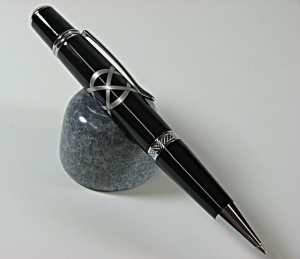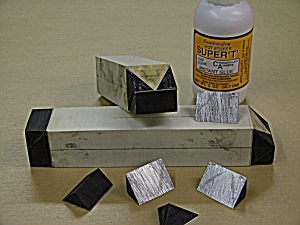ramaroodle
Member
I really like the look of using aluminum as the outer layer of a veneer sandwich in Celtic knots and segments but am having trouble getting it to reliably adhere to the wood in the blank like in the pic below. I have tried both med and thin CA and sand it before glue up to roughen it up. I've tried Alum. cans, baking trays and even thicker .75mm sheets from Amazon. It always seems to be the weak point in the blank which is expected but sometimes it just doesn't seem to hold, even curing overnight.
I'll post some pics later.
Any suggestions would be greatly appreciated.
Thanks in advance.

I'll post some pics later.
Any suggestions would be greatly appreciated.
Thanks in advance.



